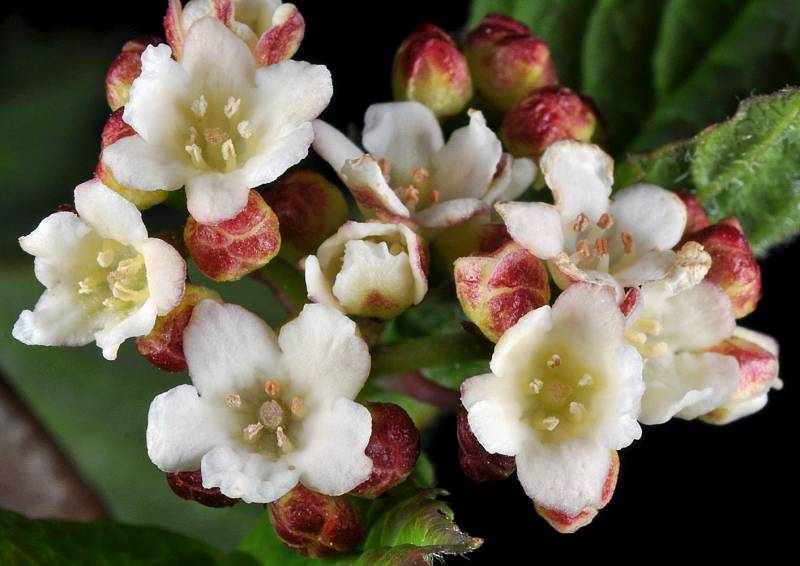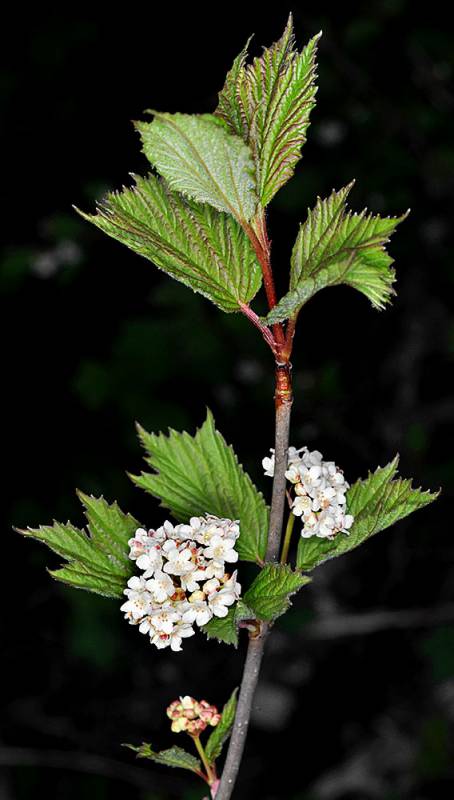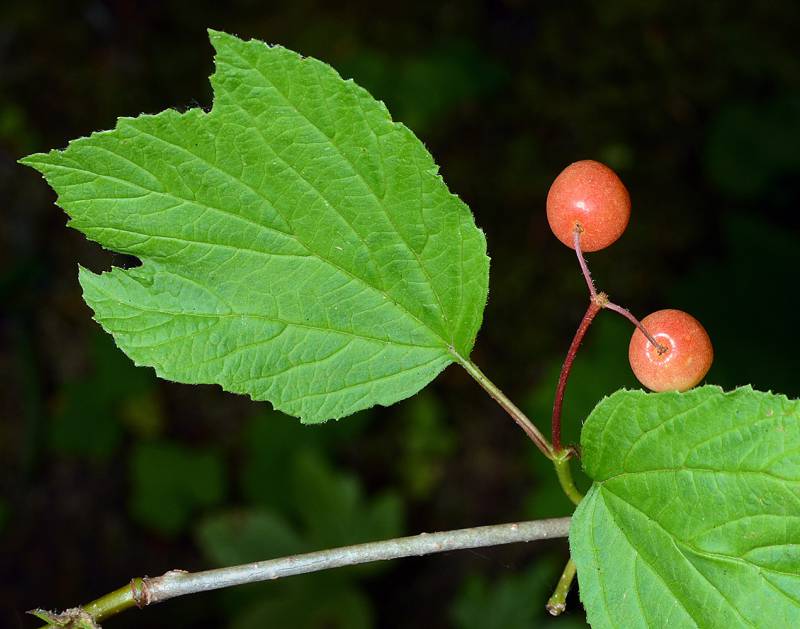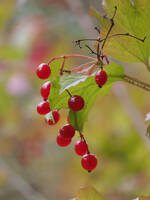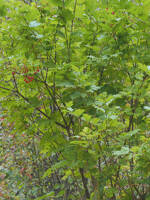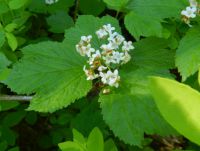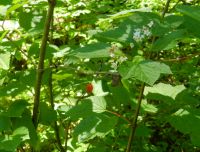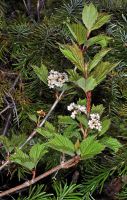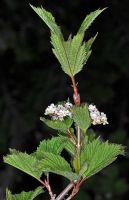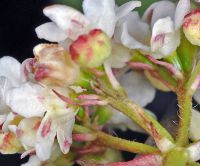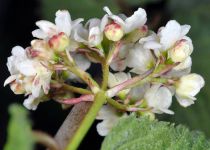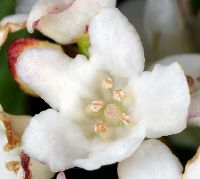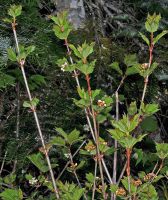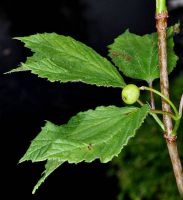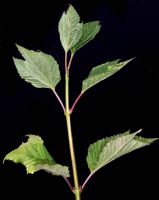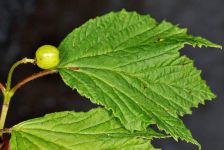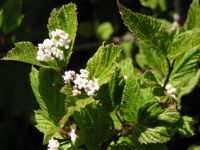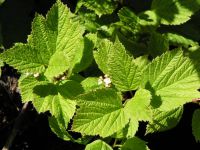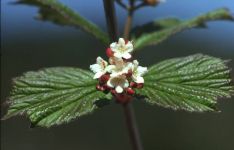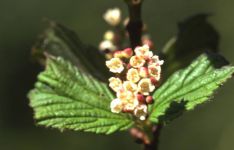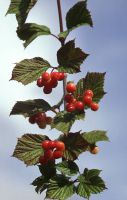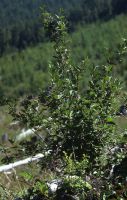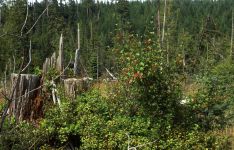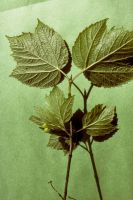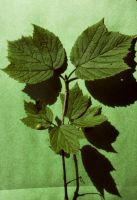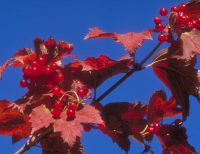Distribution: Occurring on both sides of the Cascades crest in Washington; Alaska to California, east to the Rocky Mountains, across Canada, the Great Lakes area, and further east to northeastern North America.
Habitat: Moist woods and swamps.
Flowers: May-July
Origin: Native
Growth Duration: Perennial
Conservation Status: Not of concern
Pollination: Flies, moths, beetles
Deciduous, sub-erect shrubs 0.5-2.5 m. tall, the petioles, peduncles and leaf blades with small, scattered glands.
Leaves opposite, petiolate, palmately veined and shallowly 3-lobed, or occasionally pinnately veined and without lobes, sharply toothed, usually 3-10 cm. long and wide, with a pair of glandular projections near the junction with the petiole.
Inflorescence a compound umbel, borne on a short, axillary shoot which has a single pair of leaves, 1-2.5 cm. wide with less than 50 flowers; corolla widely bell-shaped, whitish, 4-7 mm. across, the 5 lobes about equal to the tube, the flowers all alike; stamens and style inconspicuous; ovary inferior, 3-celled, but only 1 cell fertile.
Fruit a 1-seeded drupe, 1-1.5 cm. long, red or orange.
Publication: Med. Repos., ser. 2, 5: 254. 1808.
Viburnum pauciflorum Bach. Pyl. ex Torr. & A. Gray
PNW Herbaria: Specimen records of Viburnum edule in the Consortium of Pacific Northwest Herbaria database.
WA Flora Checklist: Viburnum edule checklist entry.
OregonFlora: Viburnum edule information.
E-Flora BC: Viburnum edule atlas page.
CalPhotos: Viburnum edule photos.
USDA Plants: Viburnum edule information.

